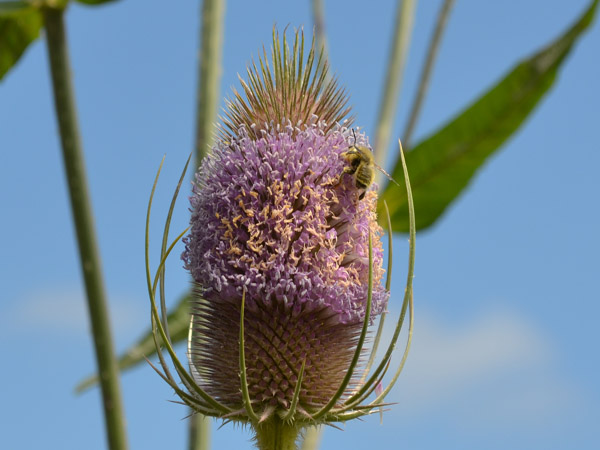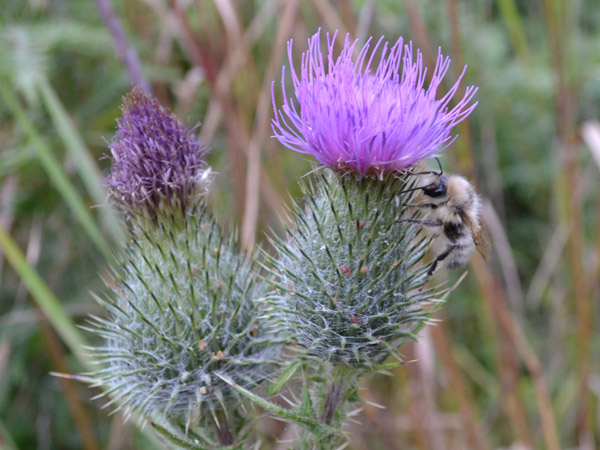One of the “slow down and listen” sounds of summer is that of the honey bees collecting pollen in gardens and fields. These tiny powerhouse workers pollinate nearly 50 varieties of orchard and field crops, including apples, pears, cherries, peaches, melons, and squash. Each hive collects about 66 lbs. of pollen yearly.
Worker bees, all female, literally work themselves to death during summer, usually in about 6 weeks. Their lifespan is 4 to 6 months in the slower winter season. Though there were native bees in North America when European settlers arrived, they were not nest-builders and makers of honey. So colonists began to import honey bees in the late 1600s.
Honey bees are doing pretty well on the Olympic Peninsula but populations have been decimated in other areas, including just north of us on Vancouver Island, B.C. Mites and disease have taken an alarming toll, threatening crop and honey production.
Beekeeping goes back to the stone age. Cave paintings show honey collection and beekeeping activities.

